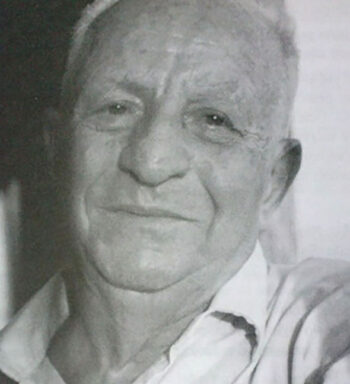Sackar, Josef

Josef Sackar was deported from Greece to Auschwitz, where he arrived on 11 April 1944. He testified about his alleged experiences only in the 1980s when interviewed by Israeli historian Gideon Greif. His interview is therefore inevitably contaminated with elements picked up during some 40 years of exposure to a one-sided narrative.
In this interview, he claimed that, after three weeks of quarantine, he was assigned to a Sonderkommando and ended up working inside Crematorium III. Here are some of the more peculiar claims from Sackar’s interview:
- Although he wasn’t slated to work at the open-air incineration pit, where murdered Jews were supposedly burned, on the first day of his work he was shown one anyway, so he could get used to the sight – and become familiar with the greatest and darkest secret of the Third Reich, so that he could boast about it later.
- He called the pits “bunkers,” although the orthodoxy insists that this term was supposedly reserved for the phantom makeshift gassing facilities just outside the Birkenau Camp. Sackar, however, had no knowledge of such a facility.
- When the Jews from Hungary arrived starting in the second half of May 1944, many large cremation pits were used to burn murdered Jews, since the cremation furnaces were supposedly overwhelmed. However, air photos from that time show that there were no burning and smoking cremation pits at or near Birkenau.
- A gassing inside Crematorium III’s gas chamber took only half an hour, after which the doors were opened, meaning that this time included the ventilation of the room, which is physically impossible, as it would have taken hours to clear the room of poisonous fumes.
- Ventilation was done not by a powerful ventilation system, of which Sackar knew nothing, but simply by opening the lids covering the Zyklon-B introduction devices (wire-mesh columns).
- He claims that on occasion 20,000 people were cremated daily at Auschwitz, which is technically impossible, as all Birkenau crematoria together had a theoretical maximum daily capacity of 920 bodies, not 20,000, and large-scale open-air incinerations simply didn’t happen, as air photos prove.
(For more details, see Mattogno 2022e, pp. 23-30.)

You need to be a registered user, logged into your account, and your comment must comply with our Acceptable Use Policy, for your comment to get published. (Click here to log in or register.)